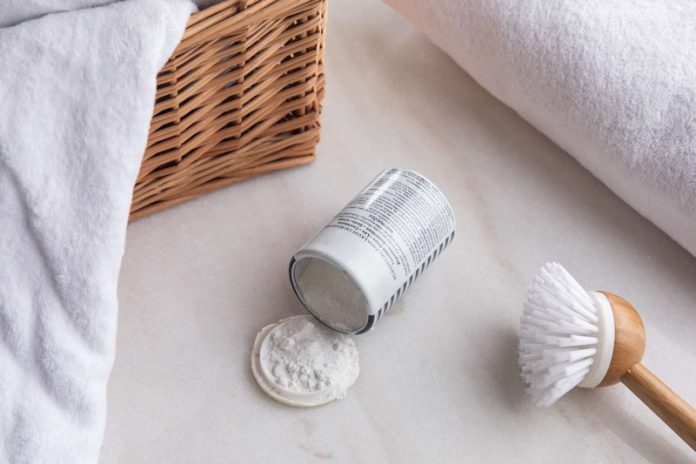Chlorine bleach is widely used for disinfecting surfaces like countertops, floors, sinks and showers. Unfortunately, bleach is harmful to the environment and our health. When it contaminates waterways, it forms carcinogens known as dioxins that harm aquatic and wildlife. If you use bleach excessively, it can damage your plumbing system too.
The good news is that many non-toxic alternative options are available to keep your clothes looking fresh and bright without causing harm. By limiting your use of bleach when doing laundry, you are also doing your part to protect your health and the environment. Keep reading to learn more about a few non-toxic laundry bleach alternatives.
1. Eco-Friendly Laundry Detergent Sheets
Eco-friendly laundry detergent sheets are a convenient and non-toxic alternative to regular laundry products, including bleach. These sheets contain much safer ingredients that are better for the environment and your health. They are easy to use; simply toss one sheet (or part of a sheet, depending on the load size) into your washing machine along with your clothes.
This type of eco-friendly laundry detergent dissolves easily in the wash and delivers powerful cleaning action. Because it is super concentrated, it removes even the toughest stains without needing bleach or other harmful products.
These sheets are also more convenient to store and transport than liquid detergents. They come in lightweight, biodegradable cardboard boxes and fit just about anywhere. Once you make the switch, you’ll wonder how you ever dealt with traditional products.
2. Lemon Juice
Lemon juice is a natural alternative to laundry bleach. It has natural whitening and brightening properties and can help remove tough stains. Plus, it smells great! To use lemon juice in your laundry, add one-quarter to one-half cup to your wash cycle with whatever detergent you prefer.
You can also create a lemon juice solution by combining equal parts lemon juice and water. Once mixed up, you can use the solution to pre-treat tough stains. For especially stubborn stains, try squeezing lemon juice directly on the garment. Sprinkle some salt on top. Gently scrub and rinse. If the item you are washing is white, put it outside in the sun for two to three hours to fade the stain further. Don’t do this with colored garments, though, because the combination of lemon and sunlight could make more than just the stain fade.
3. Baking Soda
Baking soda is another effective and non-toxic option. It is natural and safe and can help you remove tough stains and brighten your clothes. Baking soda also works well as an odor neutralizer, making it ideal for keeping your workout gear smelling fresh.
To use baking soda in your laundry, add one cup to your wash cycle and your choice of detergent. You can also create a baking soda solution by mixing up a 50/50 solution of baking soda and water. Apply this solution directly to the stain and gently rub. This helps remove particularly stubborn stains.
4. White Vinegar

White vinegar has natural whitening and brightening properties and can help eliminate tough stains and odors. Add roughly one-half to one cup to your washing machine along with detergent. Don’t worry about the vinegar smell. It will dissipate after washing.
Vinegar is an exceptional tool for dealing with underarm stains. Apply directly to the stains and let sit. After an hour or so, launder as usual.
5. Borax
Borax is an eco-friendly laundry product that is an excellent alternative to chlorine bleach. It is a mineral that you can use to brighten your clothes and remove stains. To use it as a spot remover, combine one tablespoon of borax with two tablespoons of water. Apply directly to the stain and let sit for about 30 minutes. Then, wash as usual.
If you have several garments to wash or brighten up, soak them in a bucket or tub with borax. Make a solution consisting of one-half cup of borax for every gallon of warm water. Rinse your clothes, then put them in the bucket/tub. Make sure everything is completely submerged, and then let it sit for up to an hour. Finally, wash with your normal detergent.
6. Hydrogen Peroxide
Hydrogen peroxide is a common form of non-chlorine bleach, and it’s color safe. It is an effective whitener and brightener and does not release harmful fumes. It is also environmentally friendly, as it breaks down into water and oxygen after use. To use hydrogen peroxide in your laundry, simply add one-half cup to your wash cycle along with your detergent.
7. Castile Soap

Castile soap is a natural cleaning agent suitable for many cleaning tasks, including laundry. It is made from vegetable oil and lye and has a pH level similar to that of other natural cleaning products like bleach. It does not contain any harsh chemicals. Castile soap is effective in removing tough stains and brightening clothes. There are a few ways to make castile soap part of your laundry routine.
8. Salt
Surprisingly, salt is a powerful cleaning tool that removes blood stains. First, rinse the spot with cold water to eliminate as much of the stain as possible. Then, make a thick paste of cold water and salt. Apply directly to the stain and let sit for 10-20 minutes. Rinse thoroughly and launder in cold water.
Closing Thoughts
If you’re tired of using toxic chemicals for cleaning, you’re in luck. There are many non-toxic options from which to choose, and they’re just as effective as traditional laundry products. From hydrogen peroxide to lemon juice, baking soda to white vinegar, borax to eco-friendly laundry detergent sheets and castile soap to salt, these alternatives are both safe and effective.
By embracing these non-toxic options, you can protect your health and the environment while still keeping your clothes looking fresh and bright and smelling great. The next time you need a laundry bleach alternative, consider one of these options and make a positive impact on the environment.


